From Paper Menus to Digital Menus: The Evolution of Restaurant Ordering

Changing the Way We Dine
The restaurant industry has always been a space where experience matters as much as flavor. Yet over the last decade, a quiet revolution has reshaped how customers order their meals — not with new cuisines, but through new technologies. The shift from traditional paper menus to digital menu tablets and restaurant ordering tablets is redefining service efficiency, cost management, and customer engagement.
Once considered a novelty, these devices are now becoming standard tools in modern food service operations. According to a 2024 report by Technomic, over 65% of restaurants in developed markets have either adopted or plan to adopt self-ordering kiosks or digital ordering tablets within the next three years. This surge is driven not just by convenience, but by necessity — as restaurants adapt to labor shortages, rising operational costs, and customers’ growing preference for digital interactions.
The Challenges of Traditional Ordering
In the traditional restaurant model, servers play a central role in taking orders, communicating with the kitchen, and handling payments. While personal interaction remains valuable, this manual process introduces inefficiencies.
Paper menus can quickly become outdated, requiring costly reprints whenever prices, items, or promotions change. Miscommunication between staff and kitchen can result in wrong orders, longer wait times, and wasted ingredients. During peak hours, limited staff capacity means customers may wait longer just to place an order — negatively impacting satisfaction and table turnover rates.
These pain points have pushed restaurant owners to explore smart restaurant solutions that enhance speed, accuracy, and flexibility without compromising the dining experience.
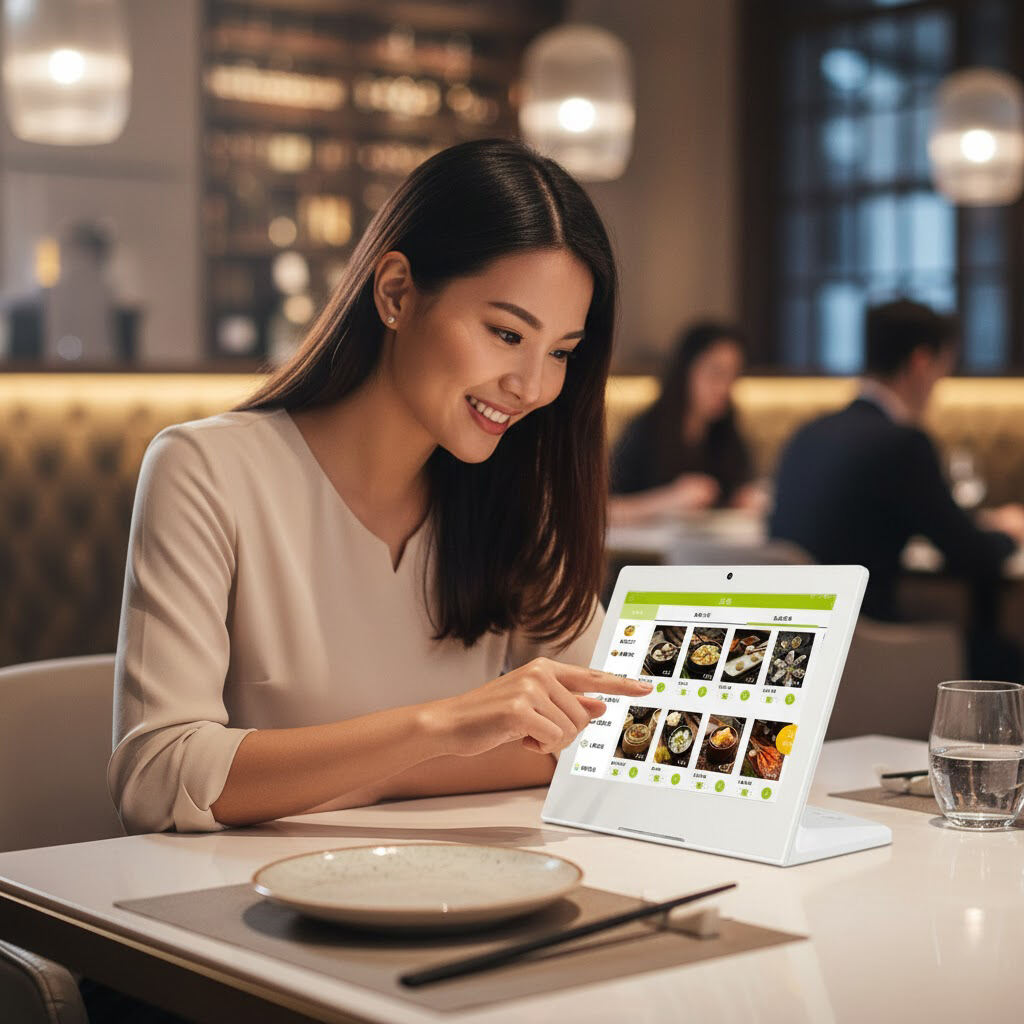
Enter the Restaurant Ordering Tablet
The restaurant ordering tablet is at the heart of this transformation. Mounted on tables or handed to guests, these devices allow customers to browse digital menus, customize dishes, and send orders directly to the kitchen. Integrated with POS systems, they streamline every stage of the dining journey — from order placement to payment processing.
Modern digital menu tablets are designed for simplicity and reliability. They feature high-resolution touch screens, durable casings, and easy-to-navigate interfaces. With POS integration, all data flows seamlessly between front-of-house and back-of-house operations. This eliminates manual input, reduces order errors, and speeds up preparation time. For staff, it means fewer repetitive tasks; for customers, it means faster, more accurate service.
Bridging Technology and Hospitality
One common misconception about self-ordering technology is that it removes the human element from dining. In reality, self-ordering kiosks and digital ordering tablets enhance human interaction by freeing staff from routine tasks.
Instead of taking every order manually, servers can focus on assisting guests, upselling premium items, and ensuring a smoother experience. In casual dining chains, for instance, restaurant ordering tablets have been shown to increase average order values by encouraging impulse purchases through appealing visuals and suggested add-ons. Customers can explore new menu items at their own pace — something that traditional menus or busy staff might not accommodate as effectively.
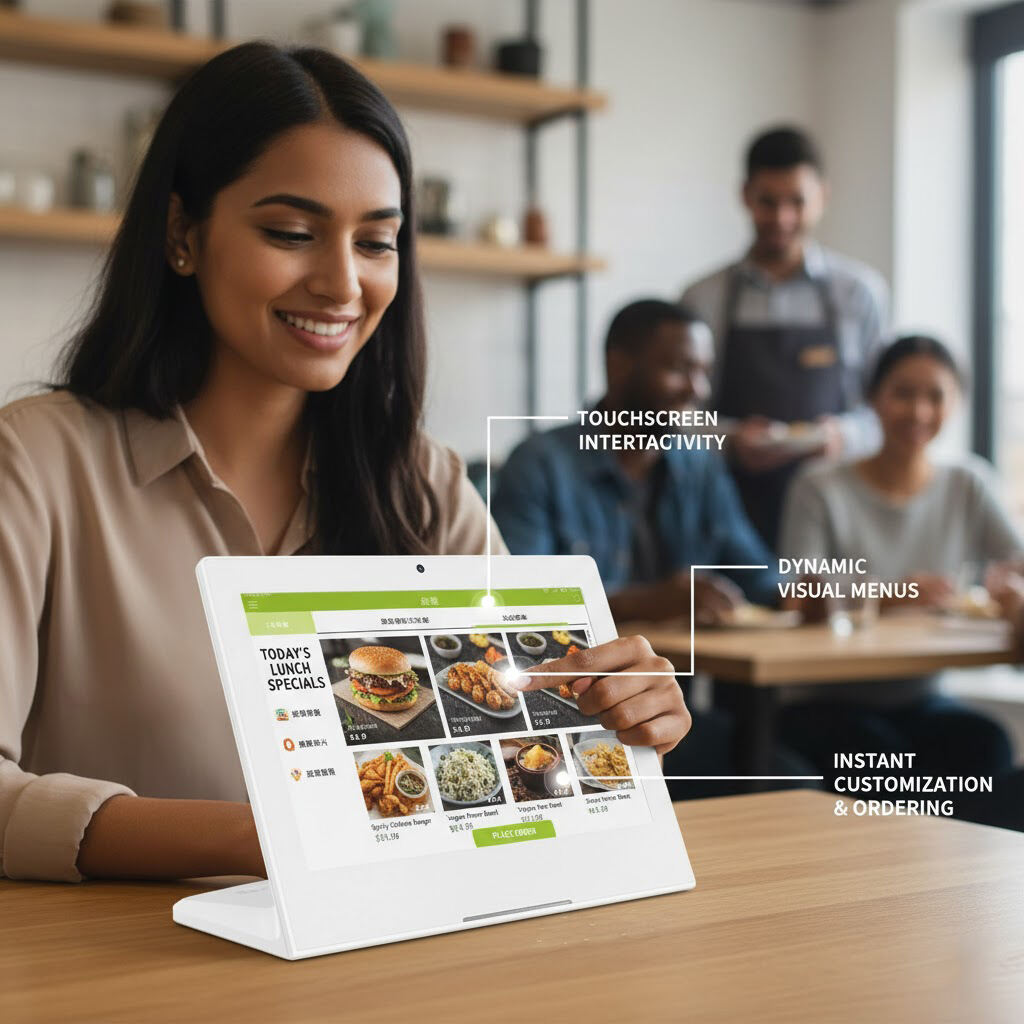
The Role of POS Integration in Operational Efficiency
True digital transformation in the restaurant industry depends on seamless POS integration. A restaurant ordering tablet connected to the restaurant’s POS system ensures that every order is recorded, tracked, and analyzed in real time.
This synchronization enables multiple benefits:
Faster turnaround: Orders are instantly sent to kitchen displays or printers, reducing wait times.
Inventory accuracy: Automatic updates help track ingredient consumption and minimize waste.
Data analytics: Insights from order history and customer behavior inform smarter menu design and pricing strategies.
For chain operators managing multiple locations, centralized data access supports consistent service quality and simplified reporting across all outlets.
Case Example: Boosting Turnover and Efficiency
Consider a mid-sized quick-service restaurant that introduced restaurant ordering tablets across its 20 branches. Before implementation, staff shortages during lunch hours often resulted in long queues and low customer satisfaction. Within three months of adopting digital menu tablets linked to their POS system, the chain saw a 25% reduction in wait times and a 20% increase in table turnover.
Customers appreciated the ability to order and pay at their own pace, while staff could focus on food delivery and table maintenance. The technology didn’t replace employees — it amplified their efficiency and improved the overall flow of operations.
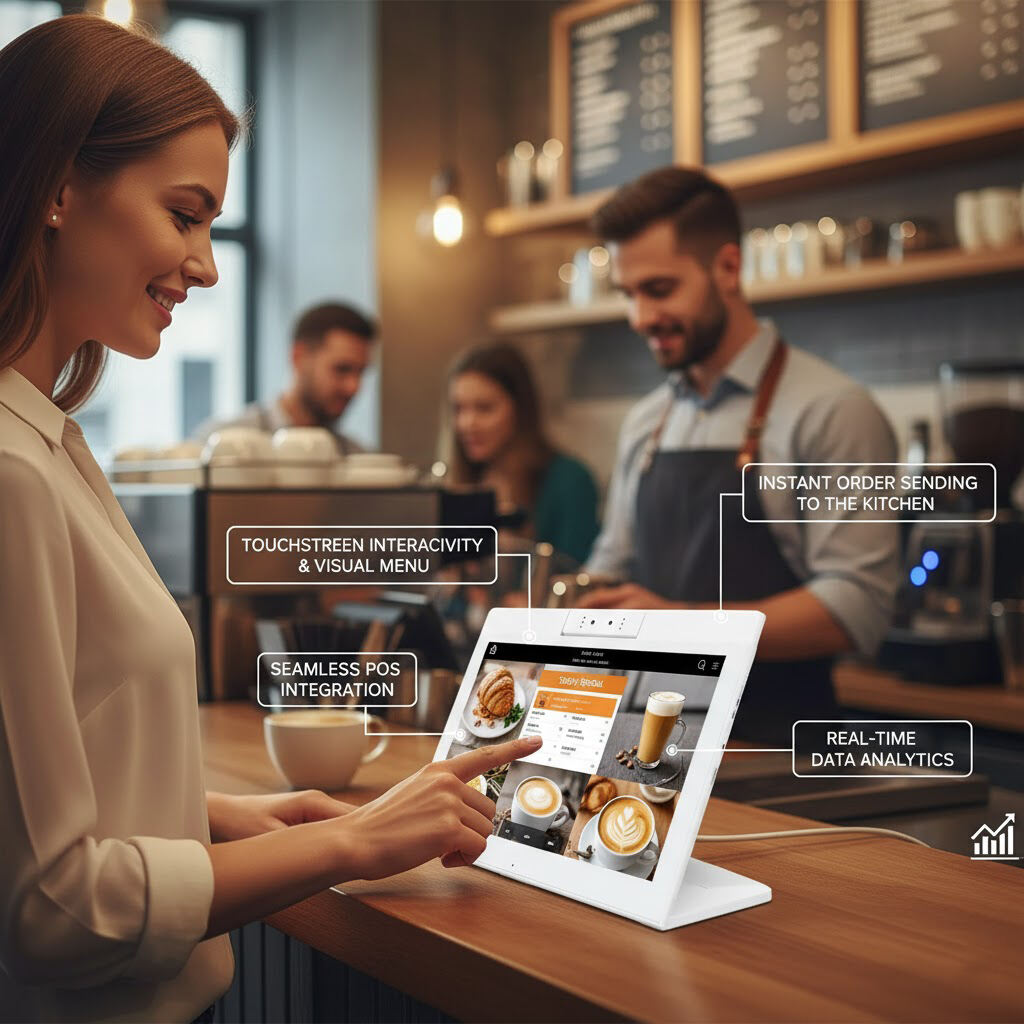
Cost and ROI: Evaluating the Investment
For many restaurateurs, the key question is whether adopting restaurant ordering tablets truly delivers a return on investment. The answer depends on both tangible and intangible factors.
While initial costs include hardware, software licensing, and network setup, the long-term savings often outweigh the expense. Reductions in labor dependency, faster service speed, and improved order accuracy directly impact profitability. Moreover, digital menu tablets eliminate the recurring costs of menu reprinting and design revisions.
Restaurants that leverage data analytics from these systems often see higher margins due to smarter inventory management and targeted promotions. In many cases, ROI can be achieved within the first year of deployment.
Enhancing Customer Experience through Personalization
Digital menus are not just replacements for paper — they’re platforms for personalization. Modern restaurant ordering systems can tailor menu displays based on customer profiles, time of day, or past orders. For instance, breakfast items can automatically appear in the morning, while dinner specials dominate the evening menu.
Visual storytelling also plays a major role. High-quality images, short videos, and ingredient details allow guests to make more informed choices. Multilingual support, dietary filters, and allergen alerts create an inclusive experience for global audiences. For international chains, these features are invaluable for maintaining brand consistency across markets.
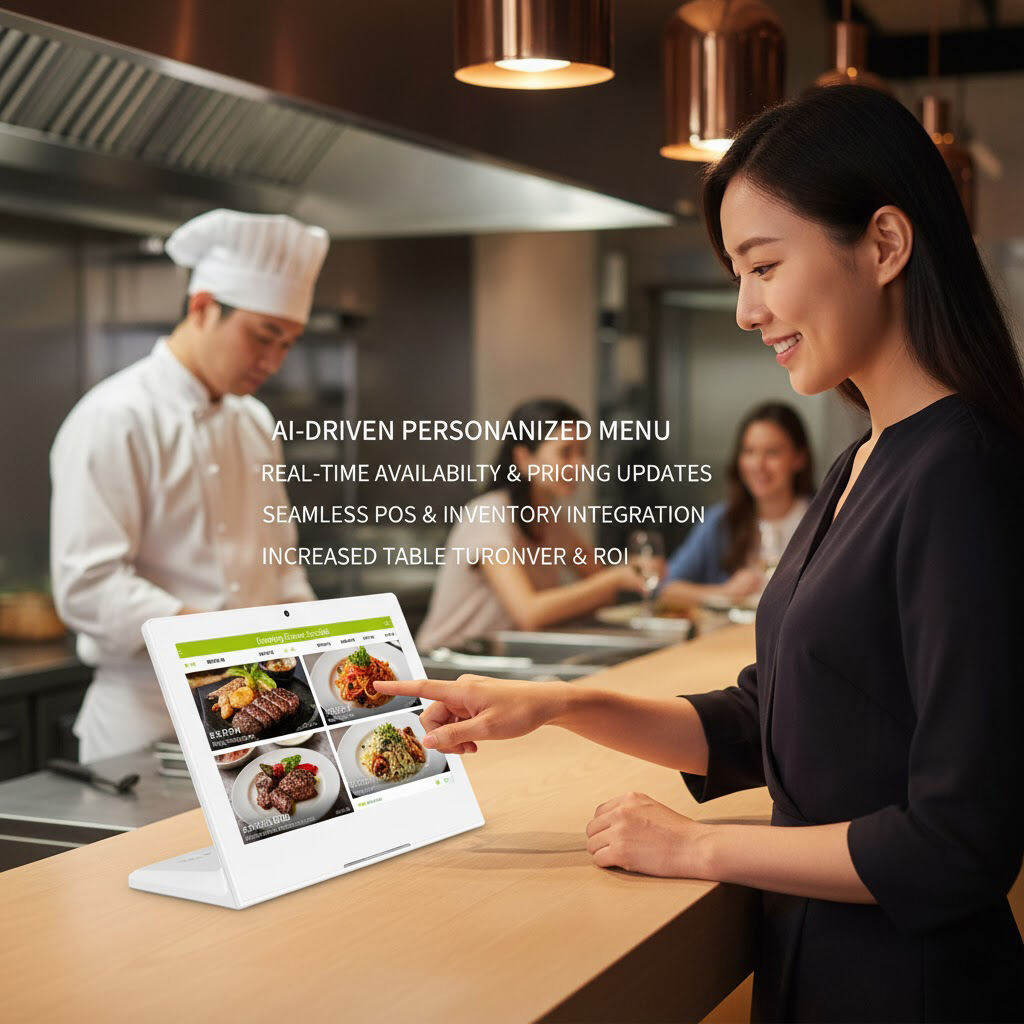
The Future of Restaurant Ordering: AI, Data, and Automation
The next evolution of smart restaurant solutions goes beyond touch screens. Artificial intelligence, voice recognition, and predictive analytics are poised to redefine digital dining experiences.
Imagine a restaurant ordering tablet that recommends dishes based on weather, current inventory, or previous customer preferences. AI-driven menu optimization can automatically adjust pricing during peak hours or suggest profitable combinations to maximize margins. Integration with loyalty systems can also reward frequent diners, turning data into long-term engagement.
As automation extends to kitchen operations and payment systems, restaurants will move closer to fully connected ecosystems — where every process is intelligent, efficient, and customer-focused.
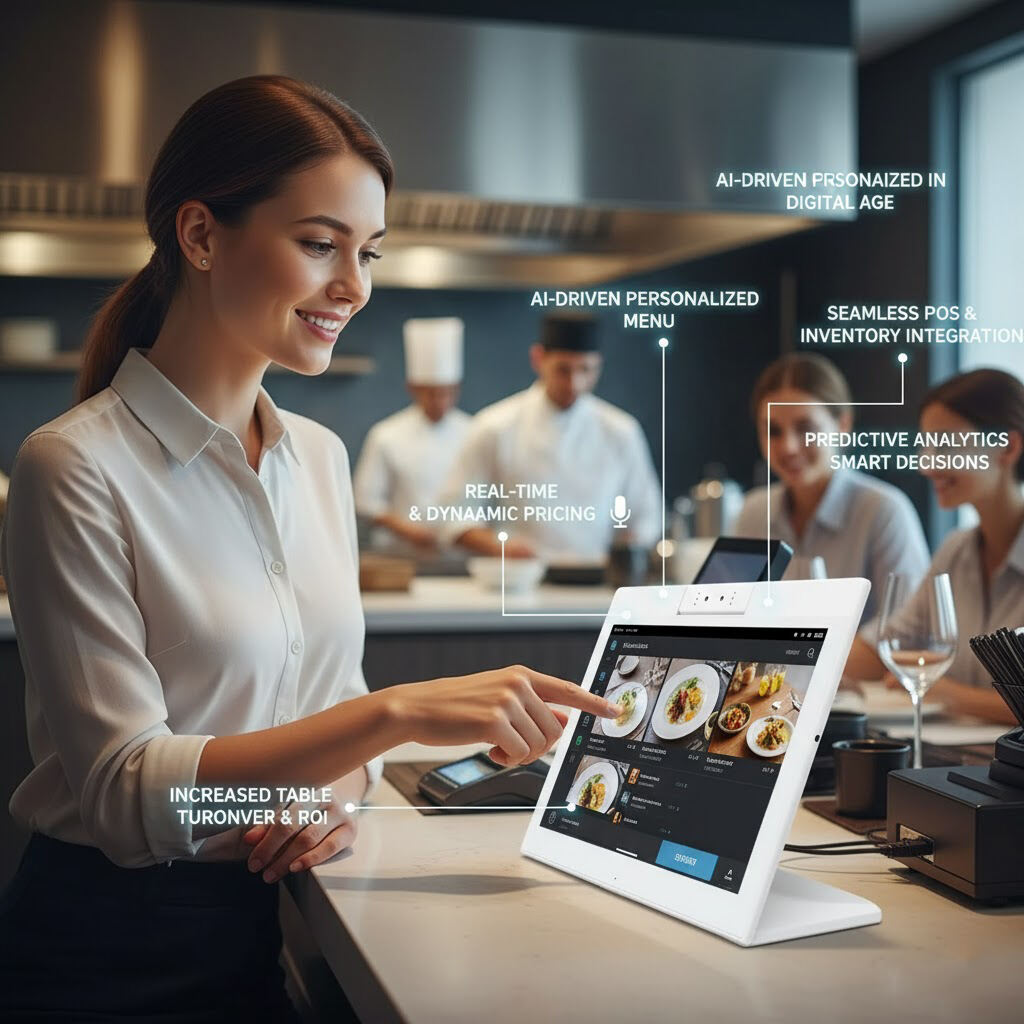
Rethinking Dining in the Digital Age
The shift from paper menus to digital ordering marks more than a technological upgrade — it represents a cultural evolution in hospitality. Restaurant ordering tablets and digital menu systems empower both staff and customers by simplifying operations and enriching experiences. They bridge the gap between efficiency and emotion, ensuring technology serves people, not replaces them.
As the food service industry continues to digitize, the restaurants that embrace intelligent, data-driven tools will be the ones best equipped to meet future demands. The table may remain the same, but the way we order — and experience — dining will never be the same again.

